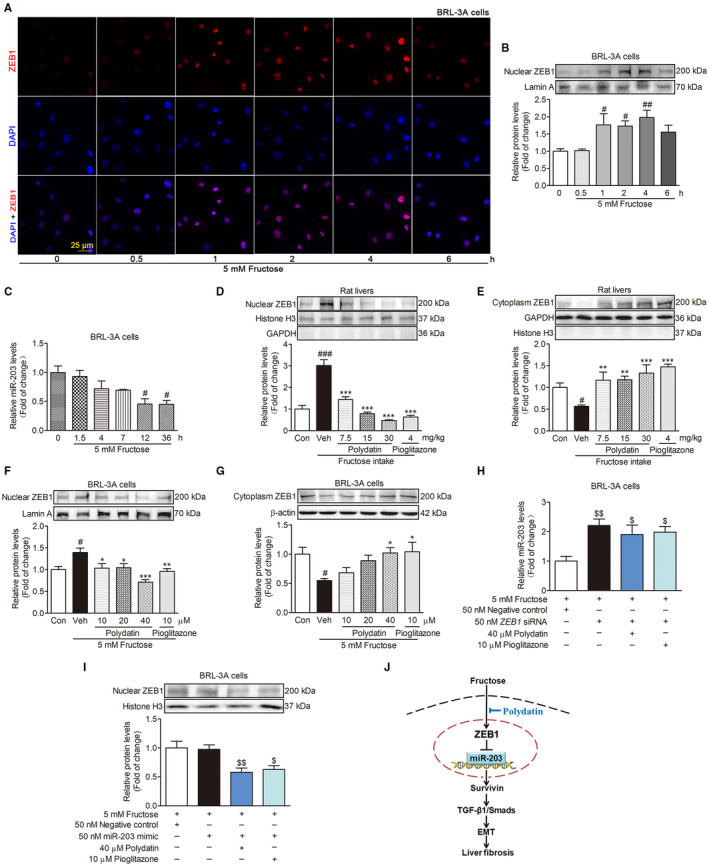FIGURE 5.

Polydatin inhibits ZEB1 nuclear translocation to enhance miR‐203 expression in fructose‐exposed BRL‐3A cells. (A) Images of fructose‐exposed BRL‐3A cells labelled with ZEB1 (red) at the indicated time points. (B) Western blot analysis of the nuclear ZEB1 protein levels at the indicated time points. (C) qRT‐PCR analysis of miR‐203 expression levels at the indicated time points. Western blot analysis of the nuclear and cytoplasm ZEB1 protein levels in rat livers (D and E) and BRL‐3A cells (2 h) (F and G). (H) qRT‐PCR analysis for expression of miR‐203 (12 h) in transfected with 50 nM ZEB1 siRNA or NC BRL‐3A cells treated with fructose in the presence or absence of 40 μM polydatin or 10 μM pioglitazone. (I) Nuclear ZEB1 protein levels in transfected with 50 nM miR‐203 mimic or NC BRL‐3A cells exposed to fructose in the presence or absence of 40 μM polydatin or 10 μM pioglitazone. (J) The mechanisms by which polydatin prevents fructose‐induced hepatocyte EMT in liver fibrosis. Histone H3 or Lamin A was as internal control for nuclear ZEB1. β‐actin or GAPDH was as internal control for cytoplasm ZEB1. U6 was as internal control for miR‐203. Each value is shown as mean ± SEM (n = 4‐6). # P < .05, ## P < .01, ### P < .001 compared with the normal control; *P < .05, **P < .01, ***P < .001 compared with the fructose control; $ P < .05, $$ P < .01 compared with the fructose‐negative control
